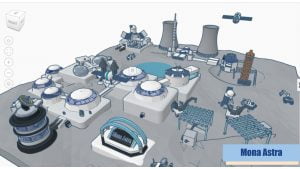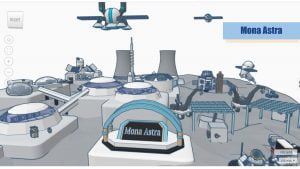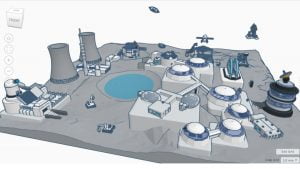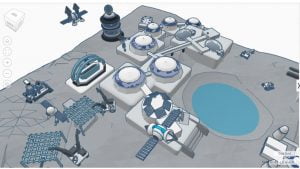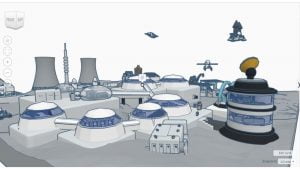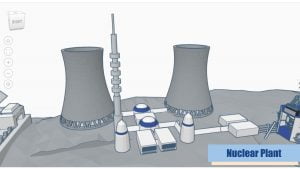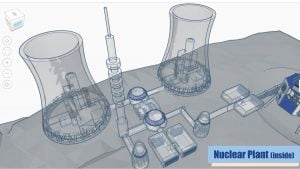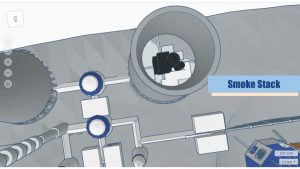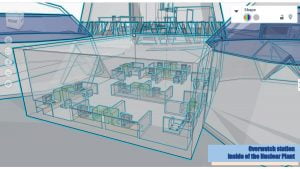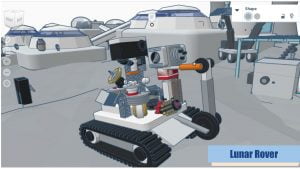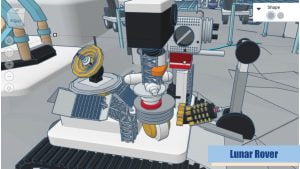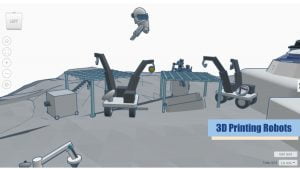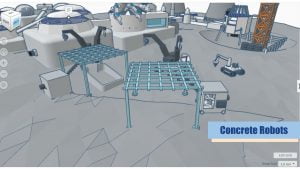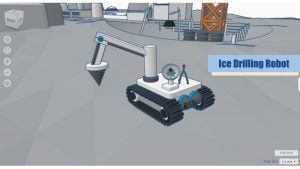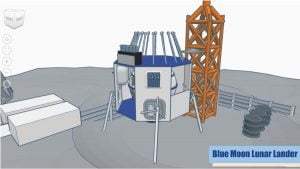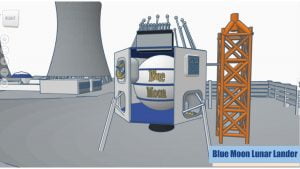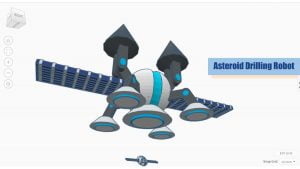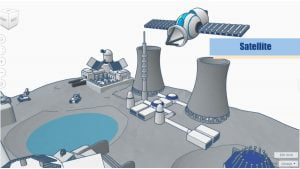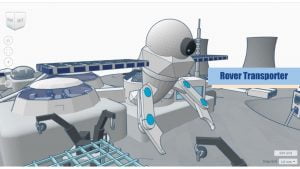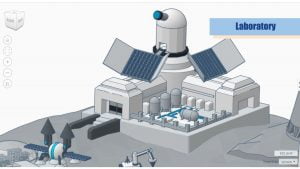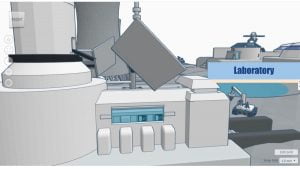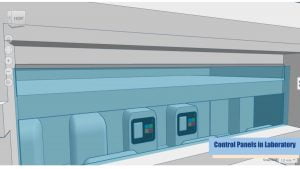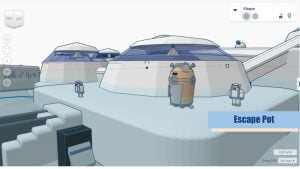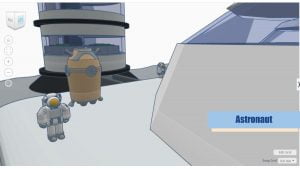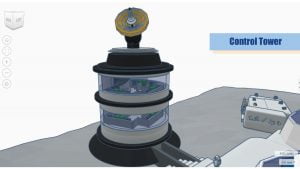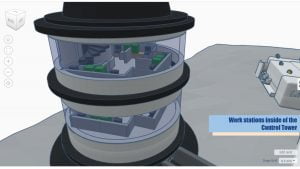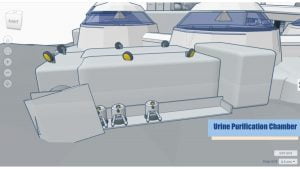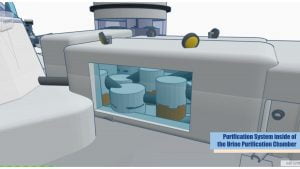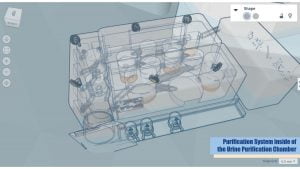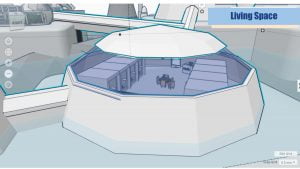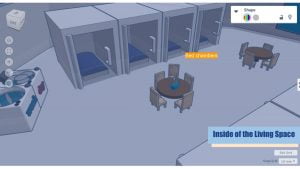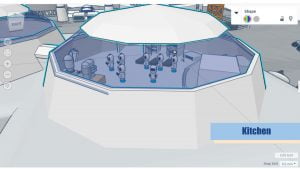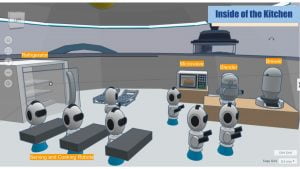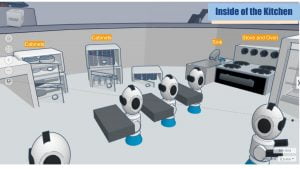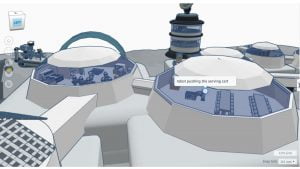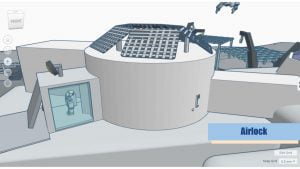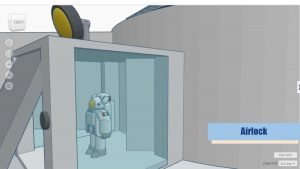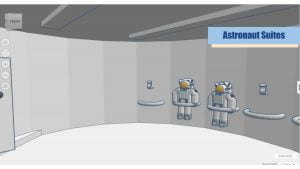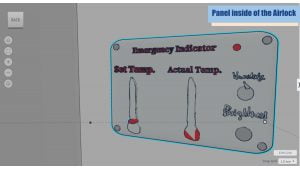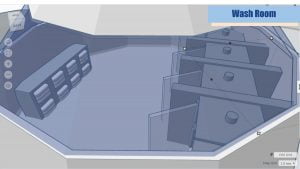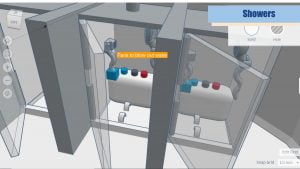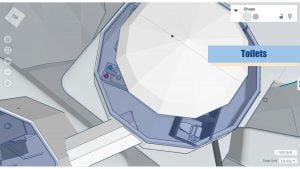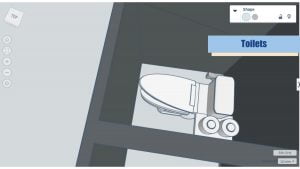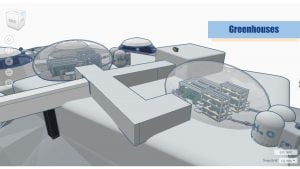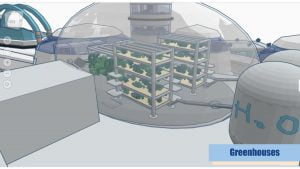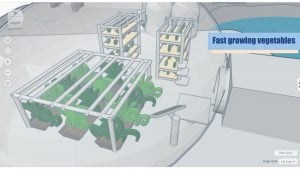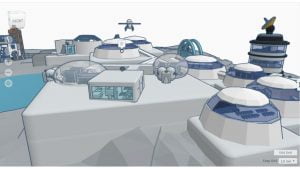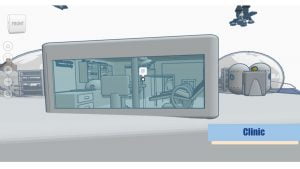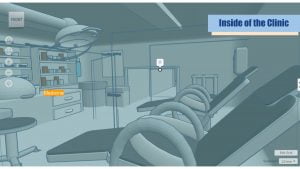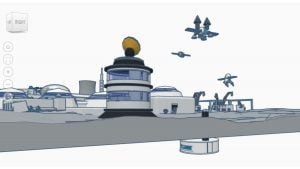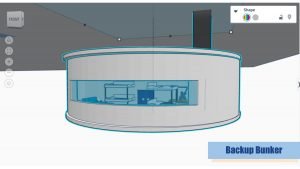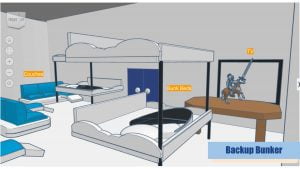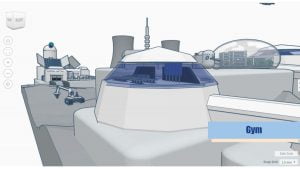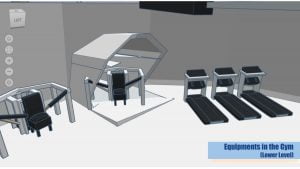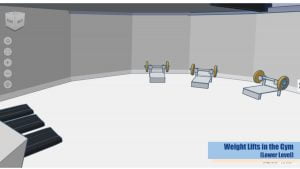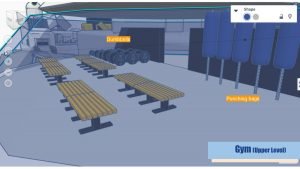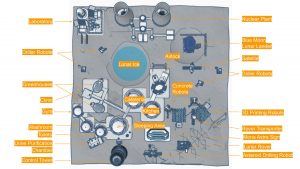Moon Camp Explorers Gallery 2020-2021
In Moon Camp Explorers each team’s mission is to 3D design a complete Moon Camp using Tinkercad. They also have to explain how they will use local resources, protect astronauts from the dangerous of space and describe the living and working facilities.
Team: Mona Astra
Michigan Youth Empowerment Foundation Troy United States 10, 11, 12, 13 First Place – Non-ESA Member states
External link for 3d
|
Project description
Our Moon Camp is named “Mona Astra”. Astra is Latin for “stars”, and often used in inspirational phrases. In Arabic, Mona means “a wish or desire”. In conclusion, Mona Astra means “A wish to get to the stars”. There are 11 buildings in our camp with bases underneath for stabilization. On the top, there’s a Nuclear Power Plant. In the top left corner is our Laboratory, to study the materials and surface on the Moon. Next to it are Driller Robots, which go out to the crater located in the center of the base and collect ice. Below the crater is our living base. There are three smaller buildings: the Gym, the Washroom, and the Toilets. We have a Urine Purification Chamber next to the Toilets, and above the small buildings are our Clinic and Greenhouses. The two larger buildings are the Kitchen and Cafeteria, and below the living base is our Control Tower for communications. The Airlock, which also has a cold storage chamber, is linked to the kitchen. The living base buildings create the shape of a reverse Big Dipper. On the bottom right, we have 3D Printing Robots that print parts for our buildings. Below the ground, we also have a Backup Bunker which is accessed by a tunnel-like staircase. In the crater, we have our Blue Moon Lunar Lander. We also have flying units, including an Asteroid Drilling Robot, a Satellite for communication with other bases, and an unmanned Rover Transporter to carry the Lunar Rover. |
|||
|
Where do you want to build your Moon Camp?
South Pole Why did you choose this location?
Our team decided to choose this location due to the many craters filled with lunar ice found in the South Pole. We can use that ice for cooking, farming, and creating oxygen. Even though the North Pole has more sunlight, we have decided that lunar ice is more valuable. While humans can survive without natural lighting, they cannot survive without sources of water. Hence, we’ve prioritized our selections based on effectiveness. How do you plan to build your Moon Camp? Which materials would you use?
First, the Lunar Rover and Driller Robots will land on the Moon and search for metals from asteroids to create several giant 3D Printing Robots. The Concrete Robots will grind rocks that are collected by the Driller Robots— like olivine, pyroxene, and plagioclase feldspar— and mix them with a fast-drying polymer— which is also made from recycled plastic, but specially treated to print the buildings. Then, the 3D Printing Robots will use the concrete to begin 3D printing bases around the moon camp for astronauts to live in and conduct research. Explain how your Moon Camp will provide the astronauts with:
|
|||
|
Water
|
Food
|
Electricity
|
Air
|
|
The reason our base is established at the South Pole is due to the presence of ice. This, in addition to using wastewater, will provide us with adequate water. For both types of water, it is first boiled then sent through a condensation filter to get rid of impurities, repeating several times. Once finished, the water is tested by robots. If failed, pipes send the water back to the first stage, where it goes through the process again. If passed, it goes through one last filter, then into a storage tank. The system self-checks each month. |
The food problem will be solved by having multiple Greenhouses to generate enough food to feed up to 8 astronauts. We will grow plants in nylon cloth that is recycled out of leftover packaging from the Earth, processed by robots into cloth. Each greenhouse has its own control panel to set watering and fertilizing schedules automatically, so astronauts don’t have to worry about it. The seeds that we bring to the Moon are fast-growing vegetables like radishes, spinach, lettuce and etc. Since we can’t depend on supplies from Earth for meat, our protein will be from short beans. |
Our main source of power is nuclear power generated by our Nuclear Plant. We chose this because it simply can make more energy than other methods. The alternative choice would’ve been solar energy. However, if we used that we would need more than 300 solar panels to power our camp. On the other hand, you would only need one kilogram of uranium to power the camp for the whole year. Because nuclear power is so efficient, we can focus our precious time on other things, like research or expansion. |
Astronauts will carry oxygen tanks upon arrival. Then, we will use an oxygen compressor for air by extracting excess air from the greenhouse. Then the air will go through processes to output oxygen into each room. Another method would be extracting oxygen from the melting ice water by using electrolysis. After putting it into a tank, an electric current is sent through it to separate it into oxygen and hydrogen. The electricity needs to be at least 1.23 volts. Hydrogen will rise because it is lighter, allowing us to gather the oxygen while the hydrogen is used for fuel. |
|
Describe a day on the Moon for one of your Moon Camp astronauts
I woke up early in the morning to the ringing of my alarm. I started my day by grabbing a quick bite at the Cafeteria — a bowl of fresh beans and rice grown in the Greenhouses. Then, I began the first checkup at Greenhouses. This is vital because if the plants grow wrong, our food supply would be wrecked. Then, I made my way to the right wing of the base, checking the sprinkler system and the panel that controls temperature. After I was done with the inspection, I headed through the hallways to check on the printers, getting in one of the suits at the Airlock and heading out. I made sure the nozzle was not clogged and the concrete was functioning. As I finished, I looked into the distance, spotting the Laboratory on the far side of the camp. That reminded me that the head researcher had asked me to fix one of the Driller Robots. I jumped toward the Lab. On the way, I marveled at the huge crater in the center of our base filled with ice. I fixed the Driller Robot and went back to the Cafeteria. After lunch, I headed to the Lab to study the materials collected from the moon’s surface. After hours of work, I headed to the Gym for my daily exercise before dinner. After a nice meal, I would inspect the Serving and Cooking robots and spend the last hour before bed washing up and chatting with my colleagues. |
|||


